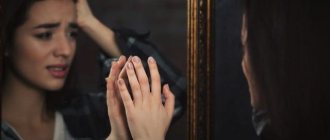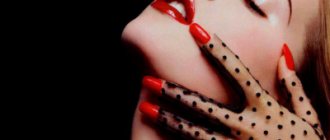Many people don’t know why they shouldn’t take pictures of sleeping people, although they’ve heard about this sign more than once. It turns out that this is a very popular point of view, and there are several explanations for it. Why is a photo of a sleeping person considered a bad omen and where did such a superstition come from? Read in our material.
It would seem that in the modern world there is no place left for superstitions. But a person’s desire to believe in otherworldly forces does not depend on the era. Quite the contrary: as soon as something new appears in our everyday life, this object immediately acquires signs and mystical faith. Like photography, for example.
READ ALSO: Scary but true: mystical stories about children and the other world
The camera appeared only in the 19th century, but is already associated with a huge number of superstitions. We will tell you about one of the most popular ones - that under no circumstances should you photograph sleeping people.
This is explained by several mystical reasons.
Why can't you take pictures of sleeping people?
It is believed that you should not photograph people in their sleep because:
- There is a superstition that photographs retain a person’s energy. It is believed that if a photo of a sleeping person falls into the hands of a psychic or a person with black magic, it can lead to the evil eye, illness or even death.
- According to some religious beliefs, the soul leaves the body during sleep. At this time, a person becomes defenseless and vulnerable to otherworldly forces. These beliefs have a medical explanation. As you know, human sleep consists of phases of deep and shallow sleep. And if he is woken up by a sudden flash or the click of a camera at the wrong stage of sleep, this can greatly frighten him or even cause a heart attack.
- There is a historical explanation for this prejudice. In the 19th century, when the first photographs first appeared, they were very expensive and took quite a long time to produce. Among the rich and famous there was a tradition of taking photographs of the deceased person as a keepsake - so-called post mortem photographs. The deceased was seated among the living, seated in a chair with a newspaper, or photographed lying in bed - that is, “sleeping.” The tradition of photographing the dead continued until the 60s of the twentieth century. Based on this, a sign was formed: taking photographs of a sleeping person means early death.
- There is also an ethical aspect to this prejudice. The fact is that in a dream a person does not control his facial expressions, gestures and postures. It just might look bad in a photograph. This is why you should not take photographs of sleeping people unless they have given permission.
Photo: Vitaly Shokhan
To reject superstitions or be at the mercy of prejudices is everyone’s business. But the photographer must respect the beliefs of his subjects.
Of course, most photos of supposedly sleeping people were not taken while they were asleep. If you want to shoot a scene with a sleeping person in the frame, simply recreate it with your model: ask him or her to take the necessary pose and close his eyes - in this case, you are guaranteed to get successful shots in which the model will look photogenic. Of course, if your task is not to put a person in a bad light for the sake of laughter or likes on social networks.
Realistic reasons for superstition
This is not to say that there are no other reasons for the appearance of this superstition. Some scientists are confident that followers of Islam also contributed to its emergence.
Sharia says that a person cannot create with his own hands what was created by a deity. All followers of Islam honor this commandment. Perhaps this circumstance influenced the emergence of superstition.
In addition, there is another completely logical explanation. This time we will talk about a tradition that existed in Europe in the 19th century. Already at that time, the camera was available to wealthy members of society, who found unusual uses for it. After all, they photographed dead people. The whole process seems quite strange to modern people.
- The deceased was combed and dressed.
- Then he was seated on a special chair, which made it possible to securely fix the corpse’s body.
- After that, the whole family sat or stood next to him to take the last photo.
Now, of course, this custom seems not just strange, but wild. However, there was actually nothing wrong with him.
Because quite often it happened that during their lifetime they did not have time to take a single photograph of a person. And so the relatives wanted to capture one last image of the one who had already left this world. People did not feel any joy when looking at the photo. But at least they got the opportunity to perpetuate the appearance of a loved one.
This may partly explain why people familiar with the custom considered photographing sleeping people to be a bad omen. After all, they believed that this was a harbinger of imminent death, so they forbade close relatives from taking such photos.
Why can't you photograph newborns?
Photo: Olesya Fetisova
Why not? Can! We even teach how to do this at a newborn photography workshop as part of our children's and family photography course. These are very valuable photographs as a keepsake, because children grow up so quickly!
But the older generation often has its own opinion on this matter. The fact is that many parents and grandparents are against filming newborns up to 40 days old.
What is the reason for the traditional ban on photographing newborns? Of course, with religious beliefs. In Christianity, this is associated with the rite of baptism. The fact is that a young mother cannot visit the temple for 40 days after giving birth, so it is recommended to baptize the baby immediately after this period has expired. It is believed that before baptism the baby is defenseless and vulnerable to evil forces, and after the baptism ceremony he finds his guardian angel. But in our time this is not so relevant, since children are not always baptized at birth: this ceremony is often postponed until 3 months, a year, 7 years, or even the child’s adulthood.
Photo: Olesya Fetisova
Newborn photographers believe that it is better to photograph babies in the first 10-14 days of life, when they are sound asleep and easily fit into various positions. You can shoot with natural light at home or with pulsed light in the studio. It all depends on the professionalism of the photographer, the wishes of the parents and the individual characteristics of the child. If the baby flinches during sleep from sharp sounds or changes in lighting, then it is better to take photographs without a flash so as not to injure the baby. But if the child’s neurology is fine, then the baby can be photographed in his sleep without any restrictions.
Posting photos publicly or saving them for family use is up to parents. But to post photographs of babies in a portfolio and sell them on stock photo sites, the photographer must have written permission from their parents.
Why can't you photograph children under one year old?
Professional children's photographers, of course, do not observe this ban, since it is rooted in the deep past. But there are several versions of the explanation for why you should not photograph sleeping babies and older, awake children:
1. Mysticism: It is believed that the child has not yet formed a biofield that protects the baby from the influence of other people’s energy. Some people think that by photographing a child, you can steal his destiny or health. Superstitious fears are gradually receding in the face of modern photo trends, so it is worth weighing all the risks: the mystical risk of depriving a child of his destiny or the real risk of depriving a child of his childhood photographs.
Photo: Olesya Fetisova
2. Medicine: Doctors do not recommend photographing small children with flash, as this can damage the retina and frighten the baby. If you value your child’s health and vision, master the technique of shooting without flash:
- Shoot children's scenes on the street : for this there is enough light on the street both in sunny and cloudy weather.
- Turn off the flash when shooting indoors by increasing the shutter speed and ISO value . However, in this case, due to the long flash, moving children may turn out to be blurry, and if the photosensitivity increases, the photo may be spoiled by digital noise. But if you don’t have high-quality photographic equipment, but you really want to capture a memorable moment, don’t miss this opportunity.
- Use a fast lens for indoor photography . The 50 mm f/1.8 portrait lens is ideal for photographing children and their parents indoors.
True, the famous pediatrician Evgeny Komarovsky clearly says in his publications: “A child of any age can be photographed using a flash without any restrictions.” According to him, there is not a single scientific study showing that camera flash causes any harm to children's health.
3. Ethics: Some sites and social networks prohibit the publication of photographs of naked children, since there are people with mental disabilities who can use these photos for inhumane purposes or pour out negativity in the comments under the photo. The ban on naked butts on the Internet gave rise to a flash mob, in which parents posted online photos of their babies with a peach instead of a butt.
Many mothers on maternity leave complete photo projects. For example, Adele Enerson photographed her daughter Mila during her nap, creating fabulous pictures using ordinary blankets, towels and tights. These photos were then issued in the form of calendars in different countries of the world.
When Mila grew up, Adele gave birth to a son, Vincent, and based on his photo, she published the children's book “Vincent and the Night”:
If you decide to deprive your baby of childhood photographs, remember that you already took the first photo during the ultrasound.
Where did the belief come from?
In those days when the camera was not yet invented, people, of course, did not take photographs. The only way to capture a person was a drawing. However, only wealthy people could afford such a luxury.
However, many tried to capture the memory of their deceased loved ones, so as not to forget years later what they looked like, so that descendants would know their ancestors by sight. Later, with the advent of the camera, the service also remained expensive. However, the tradition of preserving the face of the dead was preserved and the dead began to be photographed.
For greater realism, their bodies were placed in natural positions - standing, sitting, and dressed in expensive jewelry. To make the body look alive, open eyes were drawn over the eyelids. It was from those times that the belief began that with your eyes closed you can only photograph the dead.
Why can't you take pictures of pregnant women?
Photography is about capturing a moment. There used to be a superstition that you should not photograph or draw pregnant women, as this could stop the development of the child and lead to miscarriage. The sign was caused by the fact that previously only rich women who were not in good health were painted or, moreover, photographed. Since medicine was poorly developed, pregnancies were often interrupted by miscarriage or even death of women. Now obstetric care in European countries is well established, so there is no longer any basis for such a prejudice.
Photo: Olesya Fetisova
On the contrary, photographing pregnant women is now a separate area of children's and family photography. Many women strive to photograph themselves while expecting a baby, so that later it will be easier to explain to the child where he came from. And preserving the magical moments of pregnancy as a souvenir is also worth a lot!










